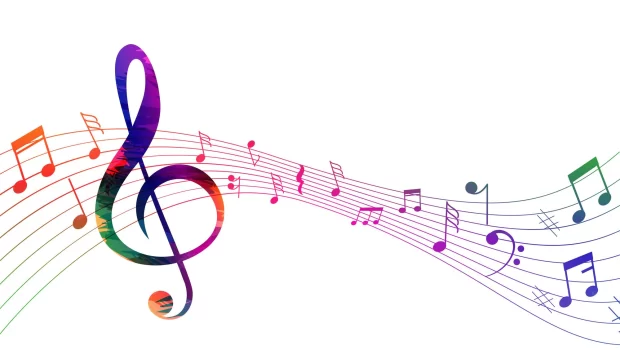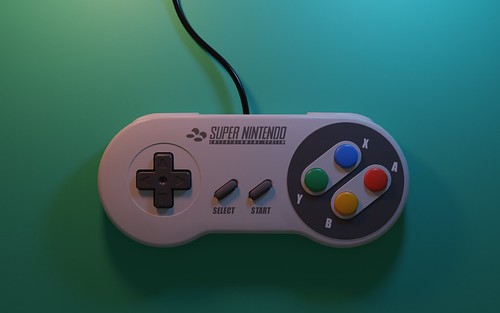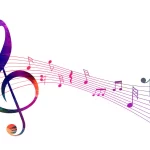Limitations as a Guiding Force for Music in Gaming
Like graphics and gameplay, music in video games has come a long way. Starting simply from necessity, machines of today can produce the same perfect recreations of music as high-end dedicated equipment. Outsiders might see the evolution of potential audio quality as constantly driving the forms of music produced to the highest-fidelity options possible, but this is not the
case.
Instead, the music found in games of today exists on a spectrum, taking into account game type, genre history, gameplay style, mood, and more. It’s a complicated balancing act, one where music is more important than just filling in the space, as it works to tie projects together while showing reverence to an entire historical zeitgeist.
Opening Doors with Technology
Music in video games began years after the ability to play was first developed, going on to become one of gaming’most important evolutions. The first title to play music on a constant loop was Namco’s Rally-X, an arcade maze chase game released in 1980. Leveraging
arcade machine power, which was far superior to anything available at home at
the time, this music to modern ears is an electronic abomination, but back
then, it was a revelation.
The first generation to be really inspiring with gaming music came in
the third generation of home gaming consoles with the NES. Here, titles like
Super Mario Bros, Tetris, Mega Man, Metroid, and Castlevania would all feature tracks that captured player imaginations. These weren’t just perfunctory, they were masterfully crafted songs developed
by composers who understood both musical theory and early electronic audio tools. The NES, with two pulse wave channels, a triangle channel, a noise channel, and a DPCM channel, was like working with Lego to a professional sculptor. Yes, the end effect was limited, but it could still be hugely impressive, and as with the graphics of the time, our minds would fill in the gaps.
“SNES Controller” (CC BY 2.0) by GamalielE. M.
Jumping into the next generation with the SNES brought with it a commensurate jump in output capabilities. Musical capabilities expanded considerably, leaving composers more room to venture further into the rapidly evolving gaming ecosystem. Many of the tracks of the time were more exploratory as a result, aiming for grand and sweeping soundscape while still beholden to limitations of sound fonts, active channels, and file size.
It was the next generation and a competing platform with Sony’s PS1 that flung open the doors of what was possible. Storing its data on CDs and being able to output quality on the same level as stereos, the PS1 gave musicians a way to stretch their legs. The space to explore in this generation paved the way for the modern market, where the gaming recommendations we still have today tie into the scope made possible with the first PlayStation console.
Existence on a Spectrum
To create the right music for a project, a game needs to understand the big picture, and what the combined weight of decades of development means for the fans. Sometimes this can mean creating music that is tied to a specific era in the past, while other times the doors are open to new approaches. In most cases, the best fit means borrowing from the past and the future, leaning on the benefits and ideas of one time while not giving completely into the restrictions of the time.
Some of the most profound examples of these creative balancing points are illustrated not in video games, but in the related landscape of online casinos. The best online slots often feature retro themes or classic ideas and commonly tie into existing media or franchises. Titles at WinAWin and High Roller, for example, include releases based on bands like Kiss or Jimi Hendrix. The music that originated in these eras was often featured on cassettes and even vinyl, but online casinos ignore the quality limitations of these early systems and offer remastered audio. On desktops, mobiles, or tablets, original limitations are weighed and then discarded, as the focus comes instead on accuracy to the source material.
On the other side of the spectrum, we have video games that offer music closer to the limited quality from which they draw. Undertale, released in 2015, is a perfect illustration of a game that takes a more obviously anachronistic approach to its music. In terms of looks, Undertale is designed to mirror the kind of RPG you’d see on the NES. The same applies to its gameplay, which utilizes simple sprites and 2D planes. It’s designed to turn back the clock, but its reflections aren’t perfect, and music is the most obvious example of this.
Without the hardware boundaries of early console developers, the music in Undertale can go a step further. Players often won’t notice too much of a difference, with the simple chip tunes-style music sounding like it could come straight from the 1980s. Acute listeners will notice a difference, however, in that Undertale doesn’t have slowdown, the tones have greater range, and more sound channels can be played a once. Then, when the action heats up, higher-fidelity tunes can kick in, taking inspiration from the SNES generation, and even modern orchestral audio potential.
Limitations are a Tool
Undertale isn’t the only game to take this approach, as it’s something many of the best modern retro video games do, but it is one of the most famous and effective. Combined, its aspects begin in grounding the experience in an era, and how we felt about gaming at the time. It brings us back to the sense of wonder that early generations possessed when the market was so young and full of potential. From this position, its expanded scope with modern technology blends the old with the new, taking some of the best elements from two very different gaming generations. In doing so, this approach can both take us back in time, and show us the future.

“Mega Man amiibo” (CC BY-SA2.0) by FaruSantos
Now in the ninth home console generation, video games have a history dating back more than 40 years. Like in any other artistic medium, what we have today is built on the foundation of what came before, and music is one of the easiest and most effective ways to express gaming’s roots. Regardless of where a release lands on the modern/retro spectrum, the effect of prior limitations can be profound. Whether you were around to experience them yourself, or you only started gaming recently, the footprints of the early days of gaming music are everywhere, you just need to know where to look.
Tweet

































